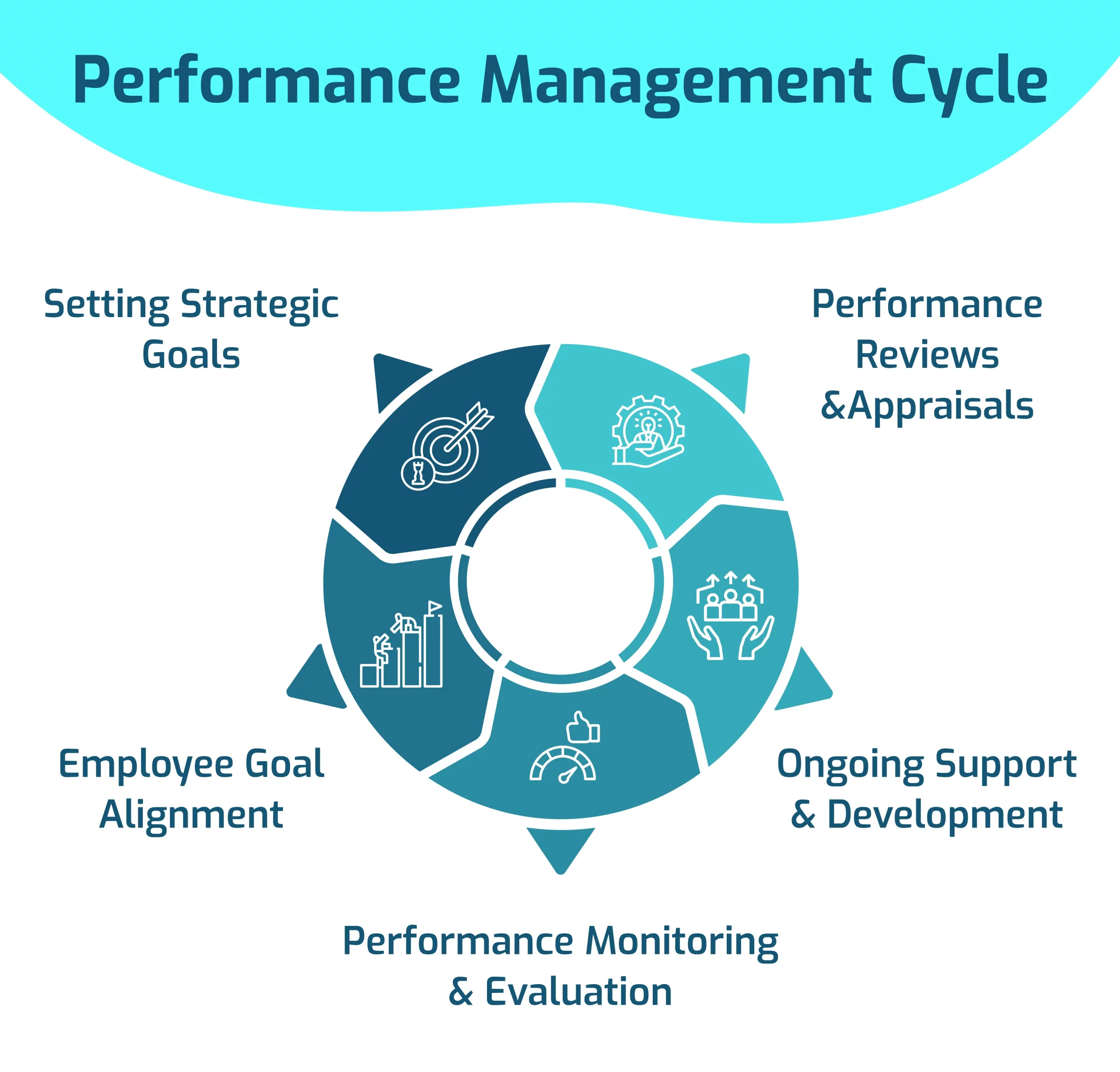Table of content
In this blog, we delve into the intricacies of Performance Management Systems to demystify the jargon and help you navigate the landscape with ease. Discover how to streamline employee evaluations, boost motivation, and nurture talent within your organization. Learn the significance of regular feedback, goal alignment, and performance appraisals in driving employee engagement and organizational success. Uncover the best practices and tools that can revolutionize your approach to managing and optimizing performance.
What is Performance Management?
Performance management is a strategic approach that involves creating a work environment where employees can perform to the best of their abilities. By setting clear expectations, providing feedback, and facilitating communication, organizations can optimize individual and team performance. Read more about performance management in our blog!
Key Components of an Effective Performance Management System
When it comes to developing an effective performance management system, various key components play a crucial role in ensuring its success. Let’s delve into the essential elements that make up a robust performance management framework:
Defined Strategic Goals
Setting clear and specific strategic goals is the cornerstone of any effective performance management system. Aligning individual employee goals with the organization’s overarching objectives ensures a cohesive and focused approach towards success.
Continuous Performance Feedback
Emphasizing continuous feedback and communication fosters a culture of ongoing support and development. Regular check-ins and open dialogue between managers and team members create an environment where performance improvement is a collaborative effort.
Performance Appraisal Process
Implementing a structured performance appraisal process helps evaluate employees’ job performance against predefined metrics. This systematic review allows for the identification of strengths, areas for improvement, and alignment with organizational goals.
Personal Development Plans
Encouraging employees to create and follow personalized development plans promotes individual growth and career advancement. Tailoring development initiatives to meet each employee’s unique needs can significantly enhance engagement and performance.
Use of Technology
Leveraging performance management software or online systems streamlines the tracking and monitoring of employee performance metrics. These tools provide a centralized platform for setting specific goals, documenting progress, and facilitating performance reviews.
Employee Engagement Initiatives
Engaging employees in the performance management process empowers them to take ownership of their professional growth. Involving team members in goal-setting, feedback discussions, and performance reviews enhances motivation and accountability.
The Performance Management Cycle Explained
In the realm of effective performance management systems, the performance management cycle serves as the backbone, guiding organizations through the process of maximizing team member performance. Let’s delve into the key phases that constitute this essential cycle.
Setting Strategic Goals
At the outset of the performance management cycle, organizations establish strategic goals that align with their overarching organizational objectives. These goals act as guiding beacons, steering employee efforts towards the attainment of organizational success.
Employee Goal Alignment
During this phase, the organization ensures that individual employee goals are in sync with the strategic objectives set at the organizational level. This alignment fosters clarity and coherence, enabling each team member to understand how their contributions dovetail with the larger mission of the organization.
Performance Monitoring and Evaluation
Continuous monitoring and evaluation form the cornerstone of a robust performance management system. Regular feedback loops help track progress, identify areas for improvement, and celebrate achievements, all of which are crucial in driving employee growth and performance.
Performance Reviews and Appraisals
Periodic performance reviews serve as pivotal touchpoints in the performance management cycle. These structured evaluations provide opportunities for managers and employees to engage in constructive dialogues, assess performance against set benchmarks, and chart out developmental pathways for enhanced performance.
Ongoing Support and Development
The performance management cycle extends beyond mere appraisal sessions, emphasizing ongoing support and development. Organizations that prioritize continuous learning and development initiatives empower employees to enhance their skills, capabilities, and overall performance.
Benefits of a Robust Performance Management System
A robust performance management system can greatly impact the success and growth of your organization. Let’s delve into the key advantages it offers to both employees and the company as a whole.
Enhanced Employee Performance
- By setting clear expectations and goals, a robust performance management system empowers team members to excel in their roles.
- Regular feedback and evaluations ensure that employees understand their strengths and areas for improvement, leading to enhanced performance outcomes.
Strategic Alignment with Organizational Goals
- Aligning individual employee goals with strategic organizational objectives ensures that everyone is working towards the same overarching goals.
- This alignment fosters a sense of unity and collective effort, driving the company towards achieving its mission and vision.
Improved Employee Engagement
- Engaged employees are more productive and committed to their roles. A robust performance management system provides a platform for continuous feedback and employee development, increasing engagement levels.
- Recognizing and rewarding good performance through the system boosts morale and motivates employees to maintain high levels of engagement.
Personal Development and Growth
- Through the performance management process, employees can create personalized development plans to enhance their skills and capabilities.
- Offering ongoing support and resources for employee growth fosters a culture of continuous learning and development within the organization.
Conclusion
In the fast-paced world of performance management systems, understanding the nuances is key to driving success. By exploring the essential components, benefits, and best practices in our guide, you are equipped with the knowledge to elevate your organization’s performance strategy. Now is the time to take action and implement these insights for tangible results. Empower your team, enhance productivity, and optimize performance with the right performance management system in place. With our comprehensive guide at your fingertips, you have the tools to make informed decisions that drive growth and maximize potential.




